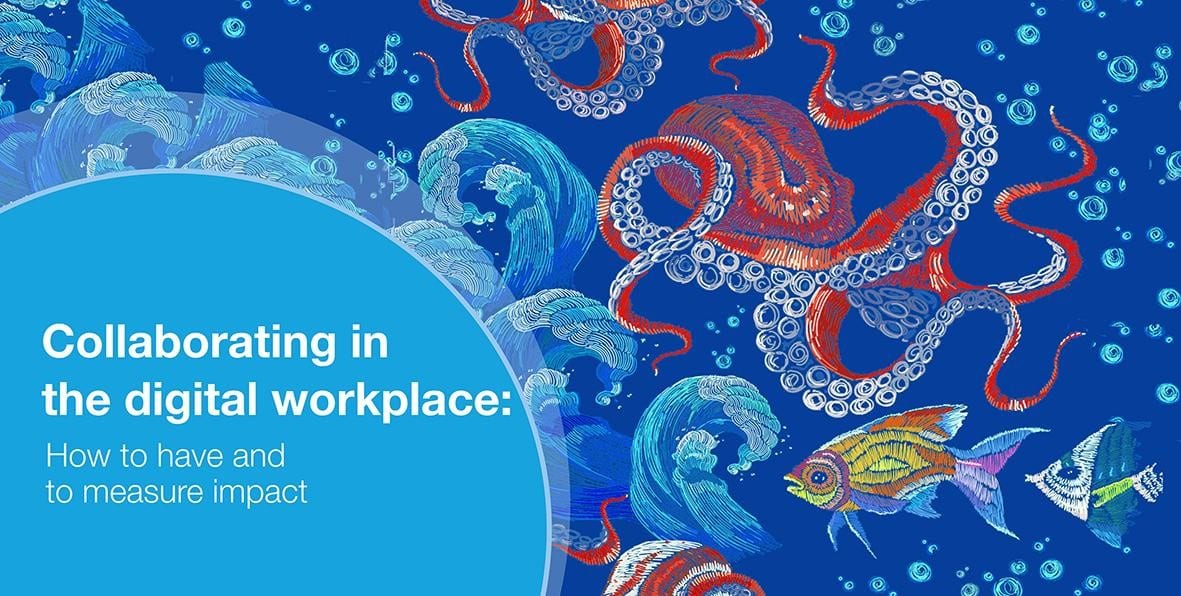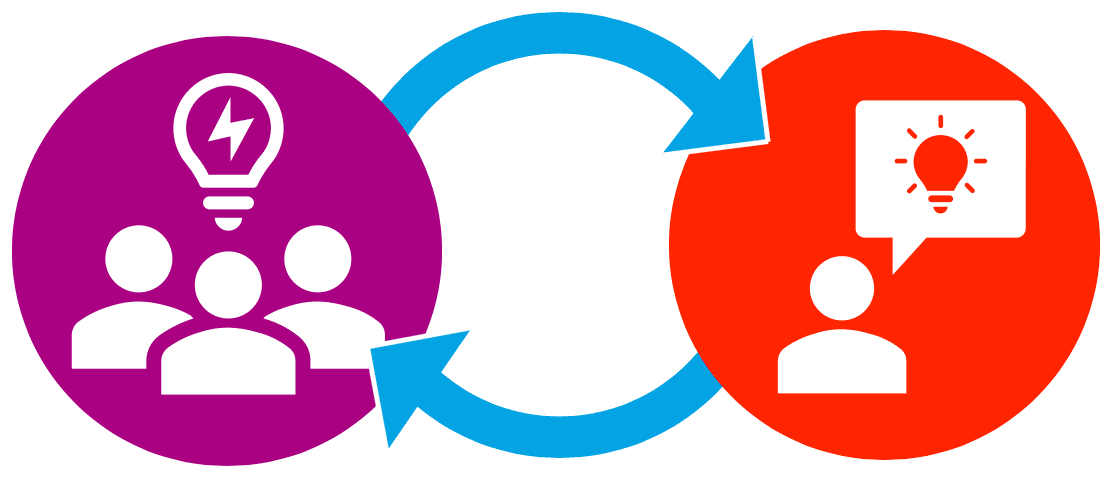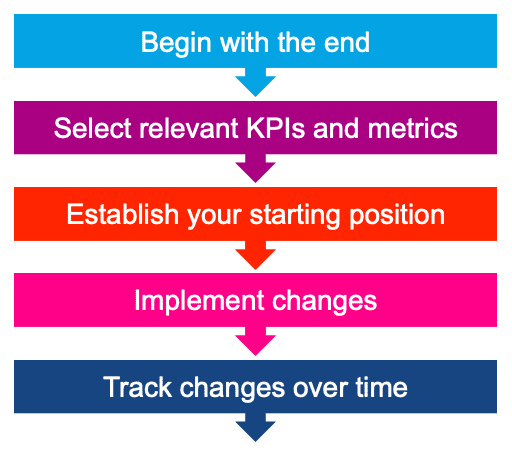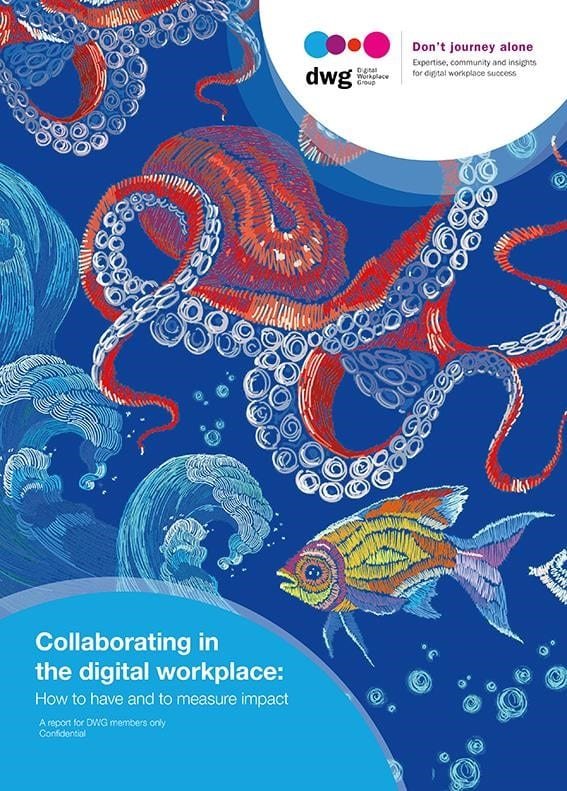How to encourage and measure impactful digital collaboration
 I’m a sucker for a mind-blowing animal story, where their intelligence brings me back to earth as an equalizer for humanity. And so, when starting the writing of DWG’s most recent research report on “Collaborating in the digital workplace: How to have and to measure impact”, I grabbed the opportunity to showcase an example of collaboration in the natural world as a route in to talking about how this way of working and problem-solving is something that comes naturally to us.
I’m a sucker for a mind-blowing animal story, where their intelligence brings me back to earth as an equalizer for humanity. And so, when starting the writing of DWG’s most recent research report on “Collaborating in the digital workplace: How to have and to measure impact”, I grabbed the opportunity to showcase an example of collaboration in the natural world as a route in to talking about how this way of working and problem-solving is something that comes naturally to us.
Instinctive collaboration
It’s been found that grouper fish team up with octopuses, and also with moray eels, to hunt together, bringing together their different specialisms to increase their collective chance of a successful hunt. Watching how the grouper uses signals to communicate with its partner, how the two have a shared understanding of why they’re working together, and how they are able to put aside competition to get a better outcome for them both, is fascinating.
Stories like this act as a reminder that, as social beings, working together to problem-solve is something that we do naturally, without having necessarily to think about it or plan for it. We do it all the time in our day-to-day lives; just think about decorating your home, or planning a shared meal. And yet, in our work as digital workplace practitioners, trying to support more effective collaboration amongst our colleagues can often feel like we’re asking our peers to do something wholly unnatural. Otherwise, we wouldn’t spend so much time worrying about adoption rates, or behaviour change, or change management. There’s a fascinating study which showed that co-located engineers were 20% more likely to communicate digitally than with colleagues located elsewhere. It turns out that physical proximity matters when it comes to collaboration and communication; this is one of the core reasons why providing digital collaboration tools does not inherently lead to greater collaboration. Not only that, we frequently forget that collaboration isn’t a single thing. Instead, it’s a fluid movement through different modes of working, from real-time group work to asynchronous group work to heads-down solo work. Collaboration requires this oscillation between the individual and the collective, something it is all too easy to forget in our drive to promote the “Working out Loud” ethic and greater collaboration. 
The components of impactful collaboration
But all is not lost. Looking at the experiences of organizations who are doing well in this area reveals certain commonalities, which can be combined to create a useful guide to planning for impactful collaboration. We’ve identified nine components, all set out in the graphic below and each with key action points. While the full research report goes into more detail for each area, a sample is also provided below.  Examples include:
Examples include:
| Component | Action points |
| Dedicated resources | Conduct an audit to understand where collaboration is currently managed, as well as what roles and responsibilities are involved, if any. Then conduct a skills gap analysis to identify whether the above expertise already exists, either within your team or indeed within other teams with whom you can work. Seek to formalize any roles and upskill people as necessary |
| Mapping tool sets | Conduct an audit of the collaboration tools that are currently in use across the organization and try to map them to your “modes of collaborative working” model. Seek to identify if there are any overlaps that may cause confusion: is it clear which tool should be used for what? The exercise can then be used to help create any awareness materials |
| “Outcome” use cases | Start with the current organizational strategy to identify which objectives exist that could be impacted by collaborative working. Try using a Logic Model to then work backwards and identify practical use cases for collaborative working that could lead to those impacts. These use cases can then form the basis of an overarching strategy |
| Consulting methodology | Document a consulting methodology and process that works for the resources you have available to you. Test it out on your own team to identify your desired outcomes for collaborative working, as well as interventions that could help you to collaborate better. When ready, you can start using the methodology to work with other teams |
Measuring impactful collaboration: Start with the end
So that’s having impact for collaborating in the digital workplace. When it comes to measuring that impact, unfortunately there is no magic single formula that can be applied. What there is, however, is a way of working through building your own approach. And it starts by beginning at the end. The best way to think about collaboration is that it needs to be purposeful, with a desired and defined outcome. If you can define what that outcome is, and know what your starting point is before the collaboration kicks off, it makes it more likely that you will be able to measure its impact. The report goes into more detail into how this can be done, including showcasing work that others have put in to identifying potential metrics and KPIs for collaborative working, but this is the key message for measuring the impact of collaboration.
What next?
Your colleagues are already collaborating, likely within their teams, sometimes across the organization, and maybe even with people outside of your organization. Our role as digital workplace practitioners is to help them collaborate more successfully, either using the digital tools at their disposal and/or introducing tools that better support their work, as well as to identify opportunities for new collaborations that these tools enable. It is possible. We just need to think more like the grouper and the octopus, and to focus on the outcome.
Get access to the full report and 70+ other best practice digital workplace reports
DWG members have access to this full report, which explores how we can help people to collaborate more successfully using digital tools. It covers the strategies and tactics that can help digital workplace teams to understand the multi-layered world of collaboration, define the impact they’re seeking, and identify whom this is intended to benefit.
This report forms part of DWG’s best practice Research Library of 70+ reports covering key areas such as strategy and governance, personalization, user experience and change management for intranets and digital workplaces. Find out what else is in the library and new research that’s coming up. Contact us to learn how to gain access to this library via DWG membership.
Take the next step…
Categorised in: Collaboration, Research reports

